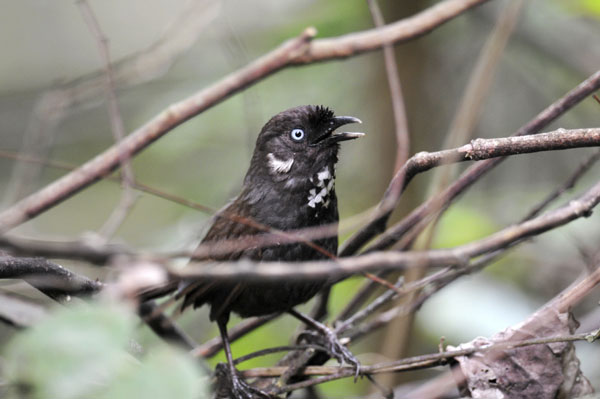Rare bird sightings a testimony to Nonggang's uniqueness
Updated: 2013-03-13 10:37
By Chen Liang (China Daily)
|
||||||||
 |
|
ZHAOWENQING/CHINA DAILY. A Nonggang babbler in the reserve |
To professor Zhou Fang of Guangxi University's College of Animal Sciences and Technology, the discovery of Nonggang babbler (Stachyris nonggangensis) shows that Nonggang is a conducive natural habitat for the rare bird.
He and Jiang Aiwu, one of his graduate students, first saw the bird during a survey at the end of 2004. It took almost four years of study and fieldwork to confirm it's a new species.
According to the ornithologist, French missionaries from Vietnam visited the area as early as the 19th century. Many of them were zoologists and botanists like Father Armand David, who is best known for discovering the giant panda and introducing Pere David's deer to stately parks in Europe.
"No one mentioned a bird like Nonggang babbler," the professor says.
Between 1979 and 1980, a comprehensive bird survey was held in the reserve. The participants had six shotguns to shoot any birds they were interested to collect specimen, but they failed to find the Nonggang babbler.
"I have been studying birds in the region since the 1970s," the 64-year-old ornithologist says. "But I had never seen it before."
It's easier to find a new species of plant or bug, he says. "But finding a new bird is a once-in-a-lifetime achievement for even a leading ornithologist," he says. "So it's kind of a miracle for me to find the Nonggang babbler."
No ornithologist had sighted the myna-sized brown bird before, probably because the bird looks plain and has a skulking habit.
It prefers to walk, flying only when frightened. It often feeds on worms and insects on limestone rocks.
In January 2006, Zhou and Jiang spent two days to catch two Nonggang babblers to conduct a thorough study. "We are lucky," the professor says. "The two birds are coincidentally one male and one female. So we never tried to catch more birds again for our research."
The two birds have become the world's only two specimen of the babbler. In 2008, the findings were published on The Auk, the world's leading journal on ornithology. Zhou and Jiang have become the first Chinese authors published in the US-based journal.
As the bird was seen only in and around the Nonggang reserve, it has been named the Nonggang babbler. "At another reserve near Nonggang, we later found a small population of the babbler," Zhou says. "Still, the bird is a very narrowly distributed species, found exclusively on karst limestone hills."
Based on the bird's habitat, the professor thinks that the bird could exist in the limestone region of Vietnam's northern highlands too. "Until it is seen there, it can be considered a species endemic to China," he says.
No more than 2,000 Nonggang babblers live in the area's karst monsoon rainforests, on limestone hills, Zhou estimates.
The low density of the bird population is partly because their predators are various and in good numbers.
They include various kinds of snakes and insects like the giant centipede. "We observed centipedes feeding on the babblers' eggs," Zhou says. "Also the adult babblers ate the centipedes."

 'Taken 2' grabs movie box office crown
'Taken 2' grabs movie box office crown
 Rihanna's 'Diamonds' tops UK pop chart
Rihanna's 'Diamonds' tops UK pop chart
 Fans get look at vintage Rolling Stones
Fans get look at vintage Rolling Stones
 Celebrities attend Power of Women event
Celebrities attend Power of Women event
 Ang Lee breaks 'every rule' to make unlikely new Life of Pi film
Ang Lee breaks 'every rule' to make unlikely new Life of Pi film
 Rihanna almost thrown out of nightclub
Rihanna almost thrown out of nightclub
 'Dark Knight' wins weekend box office
'Dark Knight' wins weekend box office
 'Total Recall' stars gather in Beverly Hills
'Total Recall' stars gather in Beverly Hills
Most Viewed
Editor's Picks

|

|

|

|

|

|
Today's Top News
Boston bombing suspect reported cornered on boat
7.0-magnitude quake hits Sichuan
Cross-talk artist helps to spread the word
'Green' awareness levels drop in Beijing
Palace Museum spruces up
First couple on Time's list of most influential
H7N9 flu transmission studied
Trading channels 'need to broaden'
US Weekly

|

|









